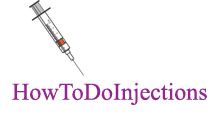- Joined
- Jun 19, 2013
- Messages
- 6,396
Let me start with the highlight, if I may. In a recent study, it was demonstrated according to the most advanced scientific standards that HGH therapy can reverse aging. You can find the study here: https://pubmed.ncbi.nlm.nih.gov/31496122/.
Now, let's delve into this to understand the background, the details, the significance, and what we can take from it.
Almost every tissue in our body has HGH receptors, meaning they are directly affected by HGH. Some of HGH's anabolic (tissue growth) effects are direct, while others are mediated through other factors. HGH is responsible for the secretion of different growth factors:
Another key factor in our immune system is bone marrow function. Bone marrow is a soft, fatty tissue inside bone cavities, and it is the primary site of new blood cell production. It contains immature cells called stem cells, which the body may convert into white blood cells, the active components of our immune system. Stem cells also play a crucial role in our body's regeneration processes for different tissues. Bone marrow also helps in the removal of old cells from circulation. This brings us to the first "I" in the TRIIM study - Immunorestoration. The study targets the restoration and support of bone marrow function, which manifests itself in improved immune function.
HGH treatment distinctly restores the active tissue in the thymus, as shown by repeated MRI scans. The active tissue in the thymus increased sharply, correlating with a decrease in dormant fat tissue. Similar effects were observed in the restoration of bone marrow function, indicated by higher active bone marrow tissue. Above all, the study followed and tested fundamental immune factors, showing marked improvements, along with different parameters of anti-cancer factors, inflammatory markers, and general blood chemistry, all showing significant improvements. Some blood chemistry parameters showed stability, indicating that GH treatment didn't harm body functioning or cause any undesired side effects. For instance, it was suspected that GH, which increases IGF-1 levels, might increase cancer risks in tissues such as the prostate, but this treatment actually improved markers in this regard.
Another potential side effect of GH is its hyperglycemic effect, meaning HGH releases glucose into the circulation. This is part of its metabolic effects; increased glucose levels promote hyperinsulinemia, reduce insulin sensitivity, and may lead to type 2 diabetes. Generally, decreased insulin sensitivity and high serum glucose levels are directly correlated to multiple risk factors and must be controlled. This brings us to the final letters in the TRIIM abbreviation - Insulin Mitigation. The study achieved balanced glucose levels by combining HGH with metformin, which is designed to control glucose levels and increase insulin sensitivity, along with DHEA, which has been proven to support various health parameters in the aging population. Indeed, all of these parameters showed no decline thanks to this proven combination.
It's important to note that all participants were healthy subjects whose biological age was lower than their chronological age at the start, indicating that the treatment is effective for a healthy population in their post-middle-age prime years, making it a real anti-aging marvel.
Now, let's delve into this to understand the background, the details, the significance, and what we can take from it.
Understanding HGH
Human Growth Hormone (HGH) is the primary hormone responsible for the growth and regeneration of various tissues in our body throughout our lifetime. From birth until adolescence, it drives the linear growth of our skeleton and other tissues and organs. In adults, it maintains a healthy metabolism and supports tissue regeneration.Almost every tissue in our body has HGH receptors, meaning they are directly affected by HGH. Some of HGH's anabolic (tissue growth) effects are direct, while others are mediated through other factors. HGH is responsible for the secretion of different growth factors:
- Systemically: HGH triggers the secretion of IGF-1 from target tissues like the liver. IGF-1 is considered the anabolic mediator of many HGH effects.
- Locally: HGH causes the secretion of growth factors in various target tissues, with autocrine or paracrine effects (these growth factors affect the organ that secretes them or its nearby area).
HGH, Metabolism, and the Immune System
HGH plays a pivotal role in metabolism and interacts with various glands, such as the pancreas and thyroid. It also has significant effects on the immune system, as highlighted by the study mentioned above.HGH as an Anti-Aging Panacea or the Curse of IGF-1?
HGH secretion declines with age, affecting all the mentioned systems. For decades, many have considered HGH an anti-aging panacea and used it anecdotally to reverse aging. However, HGH has never been approved for therapeutic treatment in aging, and no scientific literature has supported these claims. Recently, some anti-aging approaches based on animal studies suggested that high IGF-1 levels, which are increased by HGH, are associated with shorter lifespans. This led to the notion that HGH might be counterproductive as an anti-aging agent.Measuring the Reversal of Aging
Many are familiar with the concept of chronological age vs. biological age, or simply how well (or poorly) our body is functioning relative to our actual calendar age. However, fewer might be familiar with the concept of epigenetic clocks. Let's elaborate a bit: "epi" in Latin means "above," so epigenetic describes how our body expresses the genetic code we inherited, or in other words, how the layer above our DNA interacts with it. For example, two identical twins may have nearly identical DNA, but if one smokes regularly and the other doesn't, the manner in which the layer above their DNA interacts with the "same" DNA is altered, leading to different biological ages despite identical calendar ages. Scientists have developed various epigenetic clocks based on different factors that provide accurate indications of our biological age. The most significant of these is the GrimAge predictor, which provides a quite accurate indication of morbidity and mortality.Tracking Age Reversal: The TRIIM Study
The study is named TRIIM (Thymus Regeneration, Immunorestoration, and Insulin Mitigation), and we'll address each of these features. Let's start from the beginning. The "T" and the "R" suggest that the study targets the regeneration of the thymus gland. The thymus gland plays a huge role in our immune system. It's especially active and prominent from birth until puberty, after which it gradually decreases in activity, potency, and size. Nevertheless, it serves a pivotal role throughout our life in our body's ability to fight infections and even cancer. The thymus gland deteriorates with time, and there is a distinct collapse of this gland between the early 50s and the late 60s, which manifests itself in the transformation of active cells into dormant fat cells. This decline goes hand in hand with a notable decrease in immune capabilities.Another key factor in our immune system is bone marrow function. Bone marrow is a soft, fatty tissue inside bone cavities, and it is the primary site of new blood cell production. It contains immature cells called stem cells, which the body may convert into white blood cells, the active components of our immune system. Stem cells also play a crucial role in our body's regeneration processes for different tissues. Bone marrow also helps in the removal of old cells from circulation. This brings us to the first "I" in the TRIIM study - Immunorestoration. The study targets the restoration and support of bone marrow function, which manifests itself in improved immune function.
Achieving Immunorestoration
The study targets thymus regeneration and Immunorestoration by prescribing a daily dosage of 0.015 mg/kg of HGH, equivalent to about 1.125 mg (or about 3.375 IU GH) for an average person weighing 75 kg. The fascinating effects of HGH on the thymus and the immune system were observed in previous experiments in rodents and dogs, and this was the first experiment that measured these effects in humans.HGH treatment distinctly restores the active tissue in the thymus, as shown by repeated MRI scans. The active tissue in the thymus increased sharply, correlating with a decrease in dormant fat tissue. Similar effects were observed in the restoration of bone marrow function, indicated by higher active bone marrow tissue. Above all, the study followed and tested fundamental immune factors, showing marked improvements, along with different parameters of anti-cancer factors, inflammatory markers, and general blood chemistry, all showing significant improvements. Some blood chemistry parameters showed stability, indicating that GH treatment didn't harm body functioning or cause any undesired side effects. For instance, it was suspected that GH, which increases IGF-1 levels, might increase cancer risks in tissues such as the prostate, but this treatment actually improved markers in this regard.
Another potential side effect of GH is its hyperglycemic effect, meaning HGH releases glucose into the circulation. This is part of its metabolic effects; increased glucose levels promote hyperinsulinemia, reduce insulin sensitivity, and may lead to type 2 diabetes. Generally, decreased insulin sensitivity and high serum glucose levels are directly correlated to multiple risk factors and must be controlled. This brings us to the final letters in the TRIIM abbreviation - Insulin Mitigation. The study achieved balanced glucose levels by combining HGH with metformin, which is designed to control glucose levels and increase insulin sensitivity, along with DHEA, which has been proven to support various health parameters in the aging population. Indeed, all of these parameters showed no decline thanks to this proven combination.
Epigenetic Clocks and Age Reversal
The study relied on four major epigenetic clocks that constitute the most important parameters in health and life expectancy. In all of the clocks and all participants, there were marked improvements. On average, over the one-year study, the average age reversal was 1.5 years. Considering that the participants aged one year in reality during the treatment, the treatment achieved an astonishing 2.5-year reversal in biological age. Interestingly and importantly, the biomarkers were tested monthly during the year of treatment, and the fastest reversal in aging parameters was observed between months 9 and 12, indicating that the longer the therapy, the steeper the improvement. Thus, HGH therapy has a cumulative effect. Furthermore, after the termination of the one-year therapy, there were some regression changes in some of the epigenetic clocks, meaning there was some regression from the age reversal achieved during the year of therapy, but only a partial one. However, in the most important clock - the GrimAge clock, which accurately predicts mortality, there was NO regression after six months of the treatment's termination, proving the treatment's long-term effectiveness after cessation.It's important to note that all participants were healthy subjects whose biological age was lower than their chronological age at the start, indicating that the treatment is effective for a healthy population in their post-middle-age prime years, making it a real anti-aging marvel.
























































































